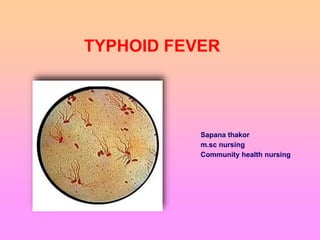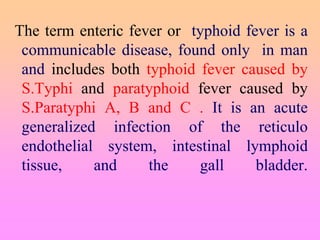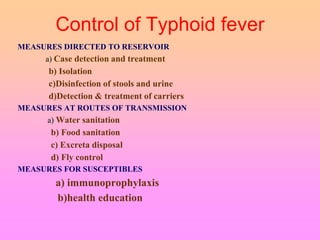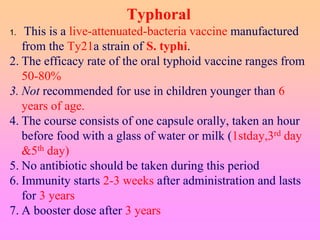Typhoid fever is a communicable disease caused by Salmonella Typhi bacteria. It primarily affects the reticuloendothelial system, intestinal lymphoid tissue, and gallbladder, causing an acute generalized infection. The disease is most common in children and young adults living in impoverished areas with poor sanitation and water quality. It is transmitted via the fecal-oral route by consuming food or water contaminated by the feces or urine of infected individuals. Symptoms include sustained high fever, headache, abdominal pain, and constipation or diarrhea. Diagnosis involves blood, stool, or bone marrow cultures. Treatment is with antibiotics like chloramphenicol or fluoroquinolones. Prevention relies on improved san























